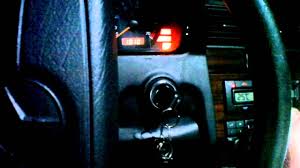How do you reset your transmission?
If its a Ford (works for a few other manufacturers too) disconnect your battery terminals while your headlights are on. Then get a wire and connect the two wires together temporarily for at least 10 minutes. Do not let these wires touch the terminals of the battery while you are doing this. The battery should be fully disconnected. DO NOT CONNECT THE TERMINALS OF THE BATTERY TOGETHER! After the time allotted remove temporary wire and reconnect terminals and start the engine, let it idle for 10 minutes to relearn fueling strategy (for fords at least). I have to do that twice a year on my f150 because the trans can get jerky for some unknown reason. Its very easy to find this on youtube.

Resetting Automatic Transmission Control Module
Maintenance of automatic transmissions can be fiddly and is usually ignored based on the experience I have seen in a lot of used cars. It gets forgotten about until something goes wrong. And the fixes can usually be quite expensive – especially if you need to get it serviced or rebuilt at as transmission specialist. But after you have done the preventative maintenance like flushing the fluid and changing the filter, sometimes it is true to the gear change timing can get jerky, or out of sync. This sometimes happens when the car has been driven unusually for a period of time (hard or soft) or when the battery has been changed and/or flat.
There is a process you should try which is known as resetting the part of the car’s computer which governs the running of the gears. Check your car’s service book and/or instruction manual. The process may be detailed in there. Probably not though, so check online forums. Some cars, like Mercedes Benz have a much more cryptic process than the more generic one detailed below. They require various procedures be done before and after to determine the steps of the process including depressing of brake pedal 3 times and other weird stuff.

Step by Step Resetting Transmission Control Module
Step 1: Turning Key Position
The first step of resetting the transmission control module is to go through the key position. First of all, you have to turn the key position and settle it to 2.
Check the dash lights of your car. Make sure that the dash lights are visible. When they are visible, you are ready for the next step.
But in the first step, you don’t need to push the accelerator and start the car. Please don’t do it in the beginning. After setting the key position, be careful.
Keep your ears open. You will listen to sounds. There will be two clicks. And after that, the dash lights will get turned on. Even in this position, do not turn the engine on.
Step 2: Pressing the Gas Pedal
Now that you are done with the key position and the dash lights, you have to move to the next step. Here, you will go through the gas pedal.
Make your move and press the gas pedal. Make sure you are pressing it down. It would help if you pushed the accelerator pedal to the floor because it will help activate the kick-down switch.
In this position, activating the kick-down switch is all you need. Don’t remove the force from the gas pedal. Keep pushing it downwards.
Step 3: Keep Waiting
Now, if you are here to reset the transmission control module for your Chevy, you have to be a little patient. You cannot expect faster changes.
However, you only need 10 minutes in this step. We have said before, don’t remove force from the gas pedal.
In this step, all you need to do is wait. 10-12 seconds will be enough for the gas pedal to start working for the resetting process. Push it and wait!
Step 4: Turning the Key Off
After you are done pushing the accelerator pedal for about 10-12 seconds, you have to go ahead and move to the key again. But don’t release the pedal.
Remember that you have to do this whole step keeping your feet on the pedal. Do you remember you had turned the keys to 2 before? Yes, and now, you have to go through them again and put them back to their previous position.
All you need to do is turn them the key off. With your hands, turn the key to zero. You might have a habit of turning the key to zero and removing the key. But in this case, you cannot do the same thing. You cannot remove the key. After turning the key back to its previous situation, you have to keep the key there.
Please do not remove it. However, this method of not removing the key doesn’t go with every model. So, check your model and know if it is required to remove the key or not. Nevertheless, in most of the Chevy models, the key is not removed.
Step 5: Releasing Gas Pedal
When you have already turned the key back to zero, you can remove the force from the gas pedal. Some people often get careless and remove the pedal even before turning the key off. But we don’t want you to repeat the same mistake! So, make sure you have kept your feet on the pedal throughout the previous step. And only remove the force from the gas pedal when you are done turning the key back to zero.
Step 6: Wait Again
We understand you don’t want to wait. But doing it will help you in making the reset process easier. After you remove your feet from the gas pedal, you have to give your Chevy some rest. Your engine needs to rest for about 2-2.5 minutes. Ensure that you have kept the key to the left in the ignition where the OFF position is. Don’t move the key. Take some time and then move into the next part.
Step 7: Ready, Steady, Go
So, you are almost done with the process. You have already done the Engine Control Unit process along with the Transmission Control Unit process.
All you have to do now is drive! The TCU process, along with the ECU, will work cooperatively. They will try to learn your driving method. They will monitor the driving pattern you have and cope with that. When you’re done with the TCu and ECU programming, you have to take your car to a drive. The drive can be 15 minutes to 20 minutes.
You have to remember that you are teaching your engine how you drive. So, do not try to go for a race. You don’t race your car every time, do you? If not, then make sure you go for decent speed. The speed you usually run your car will be the speed in this case too. Make sure that the transmission you are selecting is normal and smooth. In this way, you can easily shift your transmission and have something new in your car!

How to Disconnect a Battery to Reset a Transmission
Once a transmission repair is completed on a vehicle, the last step to carry out is to reset the “check engine” light and error codes recorded in the vehicle’s computer memory. One option is to drive the vehicle to a shop and have the computer reset, using an OBD reader. The other option is to disconnect the vehicle’s battery in order to reset any error codes, including a transmission error code. Disconnecting the battery and resetting the computer may be faster, but it may create potential problems.
Step 1
Open the hood of the car.
Step 2
Disconnect the negative cable from the battery, using a wrench to loosen the lug nut on the terminal and pulling the cable off the post. Pull the cable out of the way to eliminate any risk of the cable accidentally falling and touching the battery post.
Step 3
Disconnect the positive cable from the battery, using a wrench to loosen the lug nut on the terminal and pulling the cable off the post.
Step 4
Open the driver’s side door, press and hold down the horn until the sound of the horn stops completely. This will discharge the stored charge in the engine’s control module capacitor and clear any error code from the control module’s memory.
Step 5
Reconnect the positive cable to the positive terminal of the battery and tighten the lock nut, using a wrench, until it is hand-tight.
Reconnect the negative battery cable to the negative terminal of the battery and tighten the lock nut, using a wrench, until it is hand-tight.
How to make your benz transmission brand new for free in 5 minutes
Readers will learn how to reset the transmission of their Mercedes-Benz cars in 5 simple steps.
We would learn a Mercedes-Benz DIY today but you have to promise to not be selfish with the knowledge. This DIY helps your car’s transmission reset its shifting points to suit the exact way you drive for better gas mileage.
Transmission Control Unit (TCU) Reset
The ECU (Engine Control Unit/Brainbox) of your Mercedes monitors your driving habit over time so that the TCU can take note of how you drive and adapt the transmission to shift automatically based on how you drive.
For instance, if you race with your Benz car often, the TCU learns that it should take a longer time before upshifting as you drive but if you are a slow city driver, it will change the gears faster.
The German car brand puts this reset feature on Mercedes-Benz cars because they want them to appeal to younger car buyers.
To prepare your Benz to listen to how you drive so that it can adapt the transmission to your style, you have to follow the following steps.
Step 1:
Insert the key and put it in position 2, this is the position where all the dashboard lights come on but the engine doesn’t start. Do not start the car.
Step 2:
Press the gas pedal all the way down for 15 seconds to activate the kick-down switch. Try your best to keep your foot steady as you do this alright? it’s just 15 seconds. Enough time to say your name 35 times isn’t long.
Step 3:
Turn the key to position 0 and do not remove the key. Position 0 is the point you switch off the car.
Step 4:
Take your legs off the gas pedal and wait for two minutes. Do not open the door or touch any button on the car. It is best you take a short nap at this stage.
Step 5:
Start up the car and drive the car for 15 minutes the way you would drive the car on a daily basis. Do not perform this process on a rough/bad road that doesn’t allow freedom to move as you want except you plan to always drive on this kind of road.

